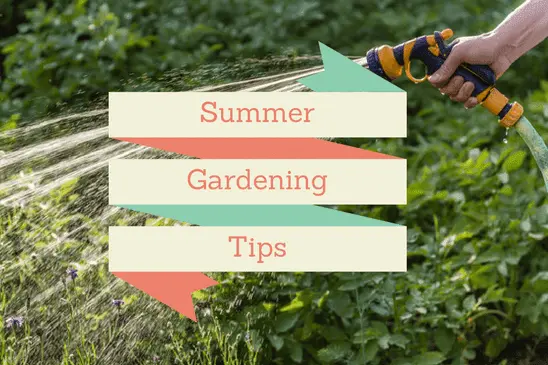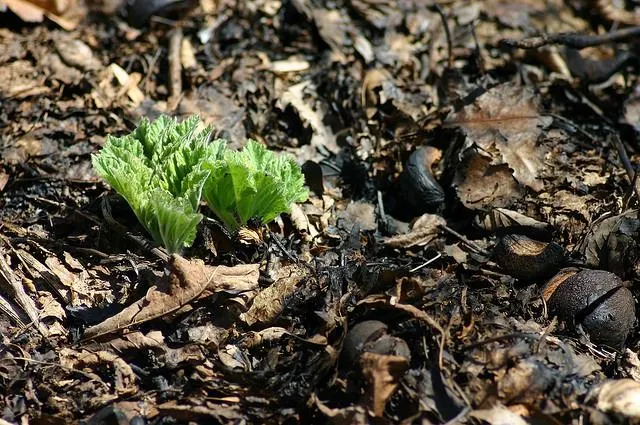Summer is one of the most difficult and challenging times to maintain your garden. August in Texas makes it even harder since it’s typically the hottest and driest month in the whole year. Here are some ways and tips that you can keep your garden looking vibrant and healthy during the hot days of summer.

Summertime is a time associated with warm lazy days fishing, swimming, grilling and of course ornately landscaped yards and businesses with brightly colored flowers, wispy and lush ornamental grasses as well as thick velvety green lawns.
Be Prepared for the Heat!
August is a hot month and has many day where the temperatures will go over a 100 degrees. You need to prepare yourself before you go out to work in your yard to prevent dehydration, cramps, heat exhaustion and heat stroke from happening to you.
Muscle spasms, nausea, headaches, vomiting and tiredness are all signs of heat health problems. If you’re experiencing any of these symptoms, stop working in your yard and go inside your home and rest.
Always do these tips before going out to work in your yard and garden:

- Drink water to stay hydrated
- Always have water or sports drinks nearby when your working outside
- Wear loose clothing
- Wear sun glasses
- Always wear a hat
- Apply sunscreen
- Apply insect repellent
- Avoid doing yard work in the middle of the day
Of course, all this colorful summer scenery comes with a price. A lot of hard work, experience and knowledge go hand in hand when it comes to accomplishing the desired look for your yard or business landscape.
As you read on, we are going to discuss helpful summer gardening tips that will:
- Save You Time
- Money
- Frustration while freeing up more time to enjoy yourself and family.
Before you begin just throwing plants into the ground, you need to understand a few things about summertime in Northcentral Texas.
First off, this portion of Texas is considered to be in a subtropical climate zone. This means that the summers are hot with mostly southern winds and temperatures rarely going below 90 degrees Fahrenheit during the daytime and often times reaching over 100 degrees.
Secondly, the average precipitation rate is anywhere from 28-48 inches of annual rainfall. This portion of Texas is considered to be in the hardiness zones of 7 and 8. Without further adieu, let us move on to gardening tips and tricks.
Top Summer Gardening Tips
1. Figure out what growing conditions your plants like to grow in
- Do your plants like full sun, partial sun or shady spots?
- Do your plants thrive better in well-drained soil or do they prefer more moist soil?
- Do your plants “get along” with their neighbors?
- What is the recommended hardiness zone for your plants?
- Knowing the answers to these questions will help ensure your plants thrive and you get the biggest bang for your buck when it comes to ground coverage, foliage, bright colors and healthy plants.
2. Know approximately how tall your plants will grow as well as spread out
- Knowing how large your plants are capable of growing will enable you to place them in appropriate spots in your yard or garden.
- Making sure you do not plant shrubs too close to fences or trees too close to your home is just as important as making sure your flowers are planted in a way that will allow each to be displayed and compliment your garden.
3. Are your plants perennials or annuals?
- Perennials are plants that you plant once and they will regrow year after year. As these plants become more established, they practically take care of themselves as far as needing less watering, developing more blooms and reseeding or cultivating themselves.
- Annuals, where these plants are absolutely gorgeous and offer magnificent color and variety, they do require a bit more work to maintain and do die at the end of each growing season. They do, however, leave seeds to help spawn a second generation of flowers.
4. Protect and care for budding plants
- Plants that start budding in the summer are very vulnerable to wilting and drying out. A sudden loss of flowers and buds can happen if you don’t take the proper measures in protecting and caring for your plants, especially ones in containers.
- Watering and mulching deeply once or twice a week can prevent your budding plants from wilting and dying. Doing this will have your garden looking great throughout the summer and into fall.
5. Water early
- Watering early in the morning is the most effective and efficient way to water your garden and yard in the summertime.
- Watering in the morning give your garden the best chance to soak up all the water it needs. It also gives your garden ample time to dry and prevent any mildew or fungi forming on it.
- Watering early also will save you money on water costs because there is less chance water evaporation and less water will be lost.
Hardy Flowers To Plant
These drought-tolerant flowering plants are generally hardy and easily capable of thriving in the North Central Texas summer climate.
- Zinnias – These flowers are super hardy, come in a rainbow of colors, can withstand full sun and light watering each week and they also reseed themselves.
- Roses – There are many beautiful varieties of roses capable of surviving the summer heat and withstand diseases other rose varieties have difficulties with. The ‘Knock Out’ and ‘Carefree Beauty’ types have been specifically developed to be tolerant of many harsh conditions and provide gorgeous summer colors.
- Lantana – The New Gold variety provides a brilliant pop of yellow to any garden and is tough as nails perfect for a Texas summer.
- Bluebonnets – This is not only the state flower, but it is also very easy to grow. Plant them in late fall and make sure weeds do not take over during the winter and you will be set with bold blooms come springtime that last for months.
- Blackfoot Daisy – Do not underestimate the power of a daisy especially this classic variety. It may look fragile, but it is as tough as they come and will give you color all summer long.
Fall Vegetable Gardens

August is an ideal time to plant a multitude of vegetables to make a Fall garden. Many types of vegetables mature and ripen in the Fall. Early maturing vegetables are the optimal choice for planting in August.
They can be planted and ready to harvest before freezing temperatures occur. Here’s a list of vegetables that you can plant for your Fall garden.
- Snap Beans
- Lima Beans
- Broccoli
- Carrots
- Cauliflower
- Chard
- Cabbage
- Sweet Corn
- Cucumbers
- Garlic
- Kale
- Okra
- Black-eyed peas
- Lettuce
- Potatoes
Choose whichever ones you like to eat and in a few weeks time, you’ll have your favorite vegetables ready to eat out of your garden. Be sure to remove any vegetables that aren’t producing or that are dying from your garden to prevent diseases and insects.
Maintaining Your Garden
Hopefully, these summer gardening tips will help you plant and maintain your very own garden masterpiece.
However, if you are in need of more helpful gardening tips and tricks Purple Care will have a wealth of knowledge to assist you.
Serving the greater Fort Worth area, Purple Care has over 20 years of experience in not only lawn care but in landscaping as well.
If you’re in need of a good irrigation system for the summer days, no need to go any further. Not only can Purple Care plot and plant a gorgeous garden for your home but as a licensed irrigation and sprinkler company they can install custom sprinklers to help maintain your garden and landscape.




Comments (0)
Thanks for your comment!
Thanks for your feedback! Your comments have been successfully submitted! Please note, all comments require admin approval prior to display.
Error submitting comment!
There is a problem with your comment, please see below and try again.